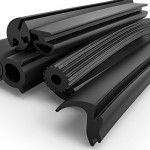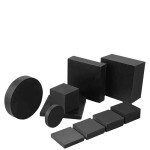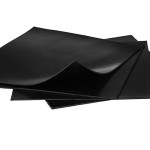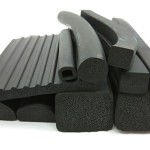
Rubber and rubber gaskets are extremely useful materials in many different applications, from mechanical devices to electronic applications. However, to use and install them correctly, you need to know some basic processes and techniques.
1. Choosing the appropriate type of rubber and rubber gaskets
Before purchasing rubber or rubber gaskets, you need to determine their type and properties to ensure they meet the required specifications. Factors to consider include hardness, strength, flexibility, heat resistance, chemical resistance, and abrasion resistance.
2. Preparing the surface
Before installing rubber or rubber gaskets, you need to prepare the surface where they will be placed. The surface should be clean and dry to ensure good bonding between the rubber and the surface.
3. Cutting and shaping
After preparing the surface, you can cut and shape the rubber or rubber gaskets to the required size and shape. If necessary, you can use special cutting and shaping tools to ensure high accuracy.
4. Installation
When fully prepared, you can install the rubber or rubber gaskets in the required position. For mechanical applications, you can use adhesive or bolts to hold the rubber or rubber gaskets in place. For electronic applications, you can use clips or supports to keep them in position.
5. Testing and maintenance
After installation, you need to carefully test to ensure that the rubber or rubber gaskets are working effectively and meeting the necessary requirements. You can perform the following testing and maintenance steps:
- Checking heat resistance: If rubber or rubber gaskets are used in high-temperature environments, you need to check their heat resistance. If necessary, you can replace them with types that have better heat resistance.
- Checking strength: If rubber or rubber gaskets are used in mechanical applications, you need to check their strength to ensure that they are not torn or damaged.
- Checking flexibility: If rubber or rubber gaskets are used in mechanical or electronic applications, you need to check their flexibility to ensure that they do not crack or deform.
- Checking adhesion: You need to check the adhesion of the rubber or rubber gaskets to ensure that they do not slip out of position.
- Performing regular maintenance: You need to perform regular maintenance to extend the lifespan of rubber or rubber gaskets. This can include cleaning, lubricating, and inspecting for wear and tear
- Replacement when necessary: If rubber or rubber gaskets are damaged or no longer meet the necessary requirements, they should be replaced with a new type.
Regular inspection and maintenance of rubber or rubber gaskets is essential to ensure they always operate efficiently and meet the necessary requirements during use.





Leave a Comment